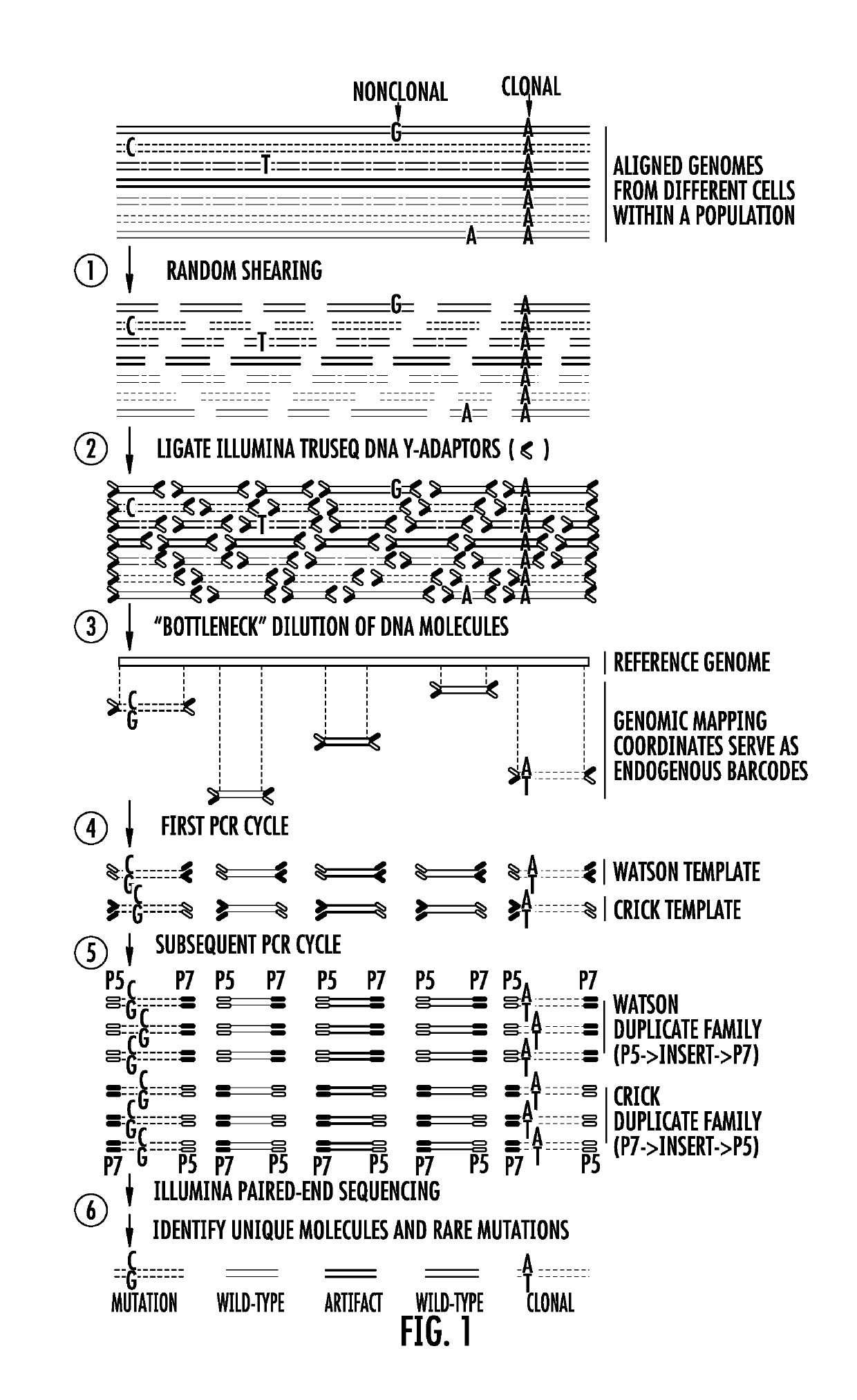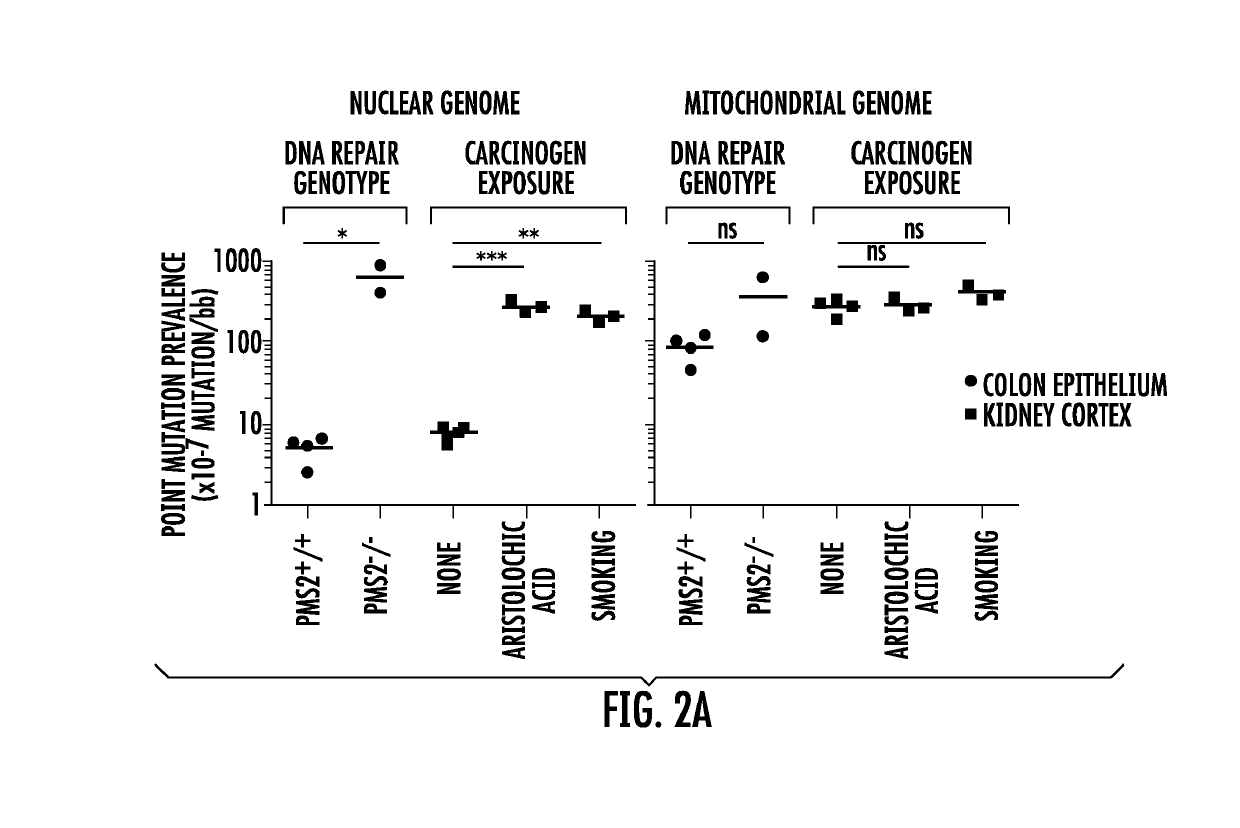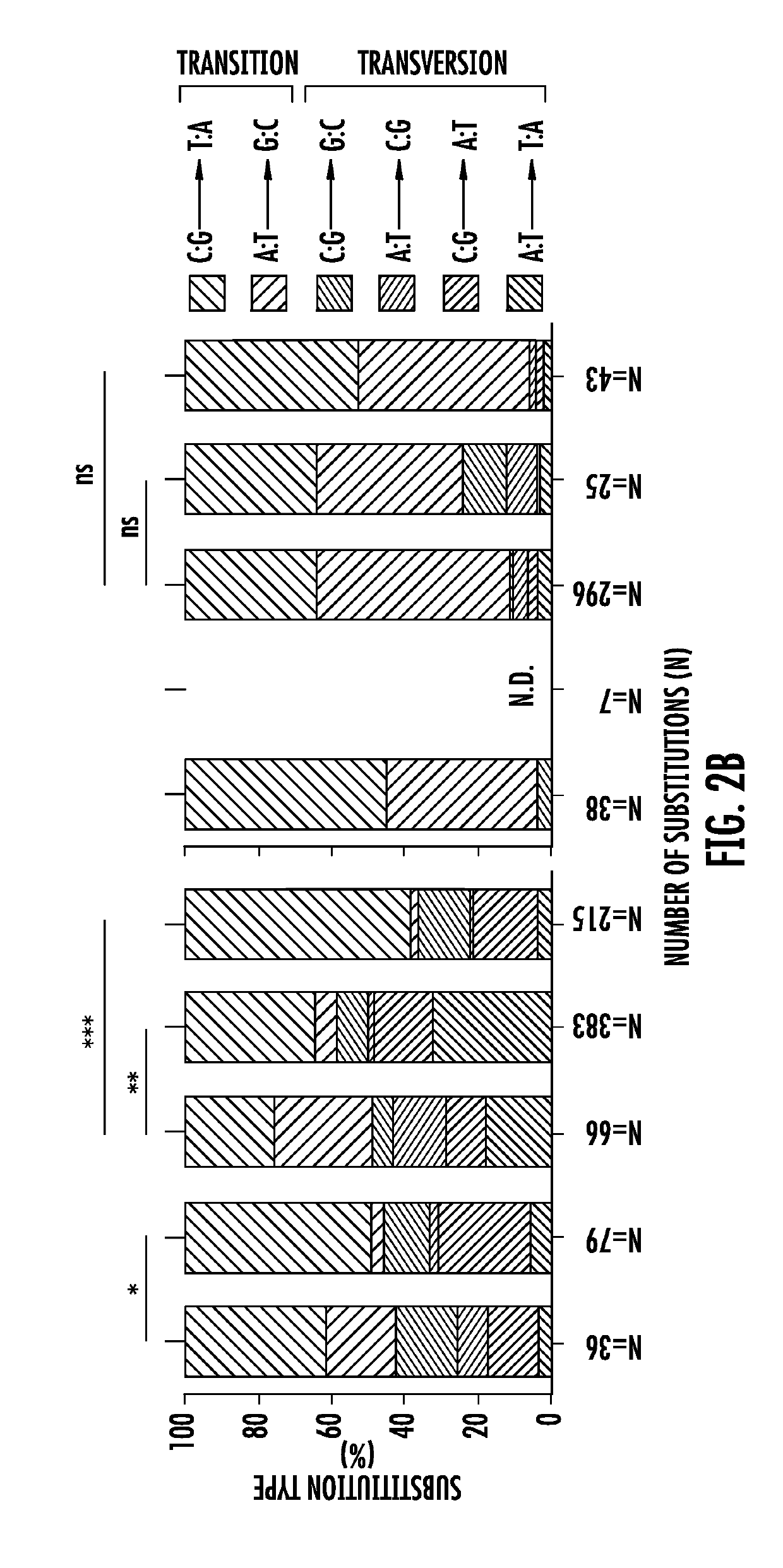Bottleneck sequencing
a technology of nucleic acid and bottleneck, applied in the field of nucleic acid sequencing, can solve the problems of limiting the detection of rare mutations, unable to accurately call a point mutation that is private to a single cell, and no high-throughput method exists to directly and systematically quantify the somatic mutation load in normal, non-diseased human tissues at a genome-wide level
- Summary
- Abstract
- Description
- Claims
- Application Information
AI Technical Summary
Benefits of technology
Problems solved by technology
Method used
Image
Examples
example 1
[0043]Human Tissue Samples.
[0044]Normal, non-diseased tissues for this study were acquired from five different sources (Supplementary Table 1). For COL229 to COL237 and SIN230, colon or duodenum was obtained from consented patients at the Johns Hopkins Hospital with the approval of its Institutional Review Board. For COL373 to COL375 and BRA01 to BRA09, flash frozen, post-mortem colon and brain was requested from the NIH NeuroBioBank (www.neurobiobank.nih.gov), with the request being approved and fulfilled by University of Maryland Brain and Tissue Bank (Baltimore, Md.) and University of Miami Brain Endowment Bank (Miami, Fla.). For KID034 to KID038, flash frozen, post-mortem kidney cortex blocks (200 mg) were purchased from Windber Research Institute (Windber, Pa.). COL238 and COL239 were previously reported 22, 35, 36. SA_117, SA_118, SA_119, AA_105, AA_124, and AA_126 were from Drs. C-H Chen and Y-S Pu of the Department of Urology, National Taiwan University Hospital and College ...
example 2
[0074]Principles Underlying BotSeqS.
[0075]The principal feature of BotSeqS is the dilution of any type of a sequencing library prior to PCR amplification. This dilution creates a bottleneck and permits an efficient, random sampling of double-stranded template molecules with a minimal amount of sequencing. Rare mutations, which would normally be masked by an abundance of wild-type sequences in conventional libraries, account for much more of the signal at the corresponding genomic position in a bottlenecked library. Dilution also increases the likelihood that both the “Watson” and “Crick” strands of a DNA molecule will be sequenced redundantly, a feature critical for the high accuracy of BotSeqS and the relatively small amount of sequencing required to implement it. The presence of the same rare mutation on both strands can substantially decrease artifacts and increase specificity12. Finally, the random nature of dilution allows DNA molecules from both nuclear and mitochondrial genom...
example 3
[0076]Generation of BotSeqS Libraries.
[0077]A standard Illumina TruSeq™ PCR-Free kit was used to generate 44 BotSeqS libraries from the normal tissues of 34 individuals (Supplementary Table 1). This included nine individuals with one or two technical replicates. In addition, 10 of our 12 cohorts had more than one biological replicate, each containing two to six individuals.
[0078]The preparation of BotSeqS libraries starts with the random shearing of genomic DNA (FIG. 1). This fragments the genomes into variably-sized DNA molecules, each possessing unique end coordinates called endogenous barcodes10. Following ligation of standard sequencing adapters to the DNA molecules, the library is diluted to reduce the number of molecules in the population. To identify the correct dilution factor, a ten-fold dilution series was assessed on a MiSeq™ instrument (FIG. 4). After dilution, PCR amplification of the library generates multiple copies (duplicates) of each DNA molecule. The endogenous ba...
PUM
| Property | Measurement | Unit |
|---|---|---|
| Fraction | aaaaa | aaaaa |
| Time | aaaaa | aaaaa |
| Time | aaaaa | aaaaa |
Abstract
Description
Claims
Application Information
 Login to View More
Login to View More - R&D
- Intellectual Property
- Life Sciences
- Materials
- Tech Scout
- Unparalleled Data Quality
- Higher Quality Content
- 60% Fewer Hallucinations
Browse by: Latest US Patents, China's latest patents, Technical Efficacy Thesaurus, Application Domain, Technology Topic, Popular Technical Reports.
© 2025 PatSnap. All rights reserved.Legal|Privacy policy|Modern Slavery Act Transparency Statement|Sitemap|About US| Contact US: help@patsnap.com



